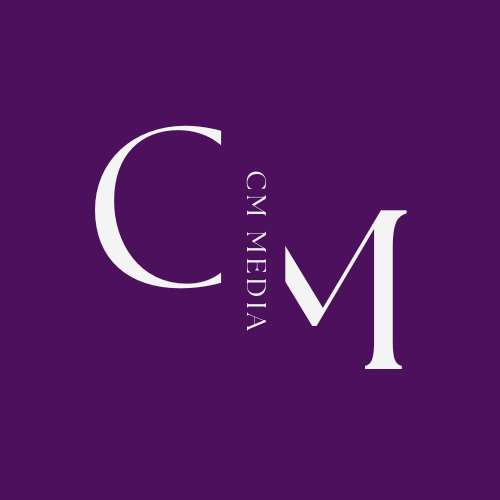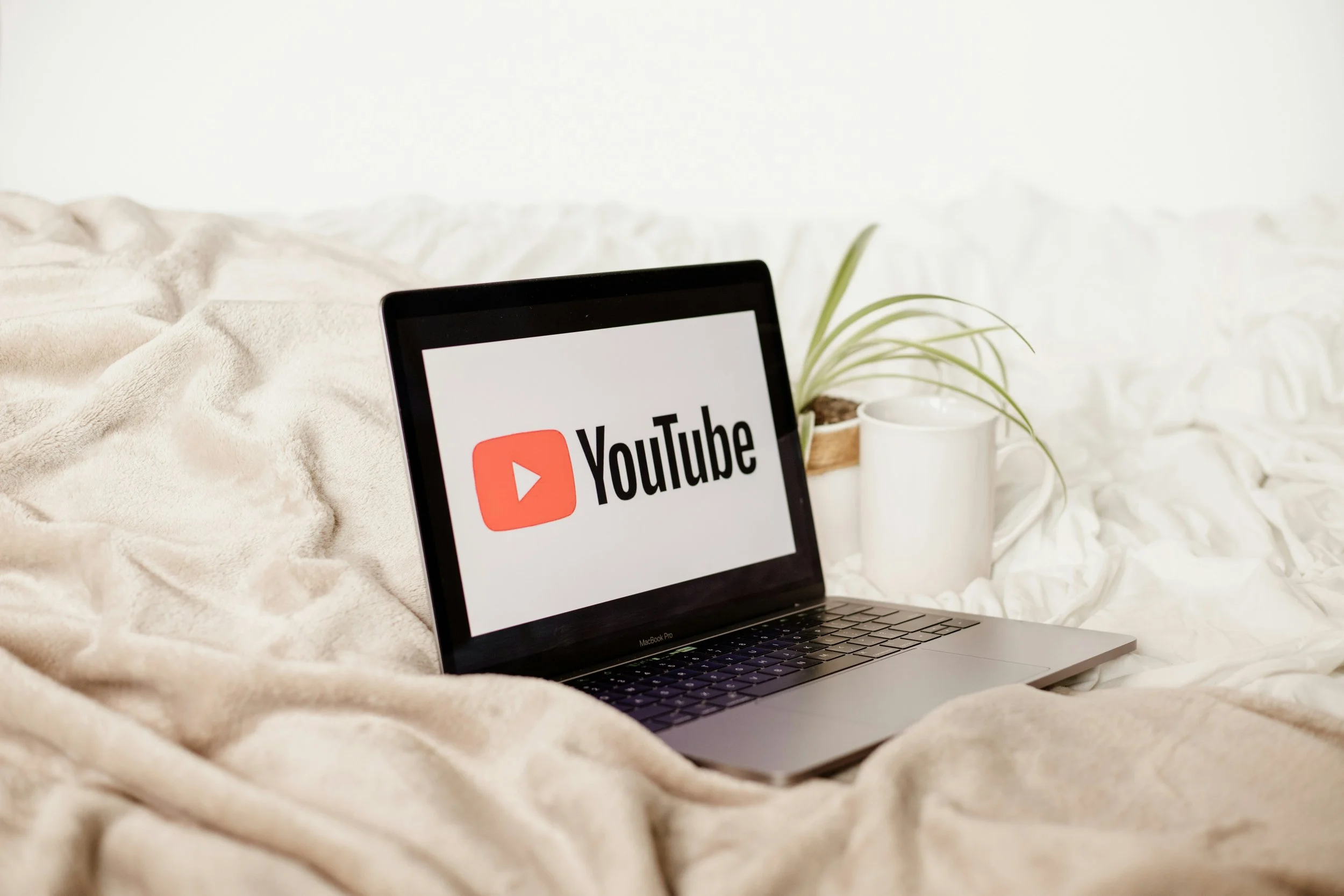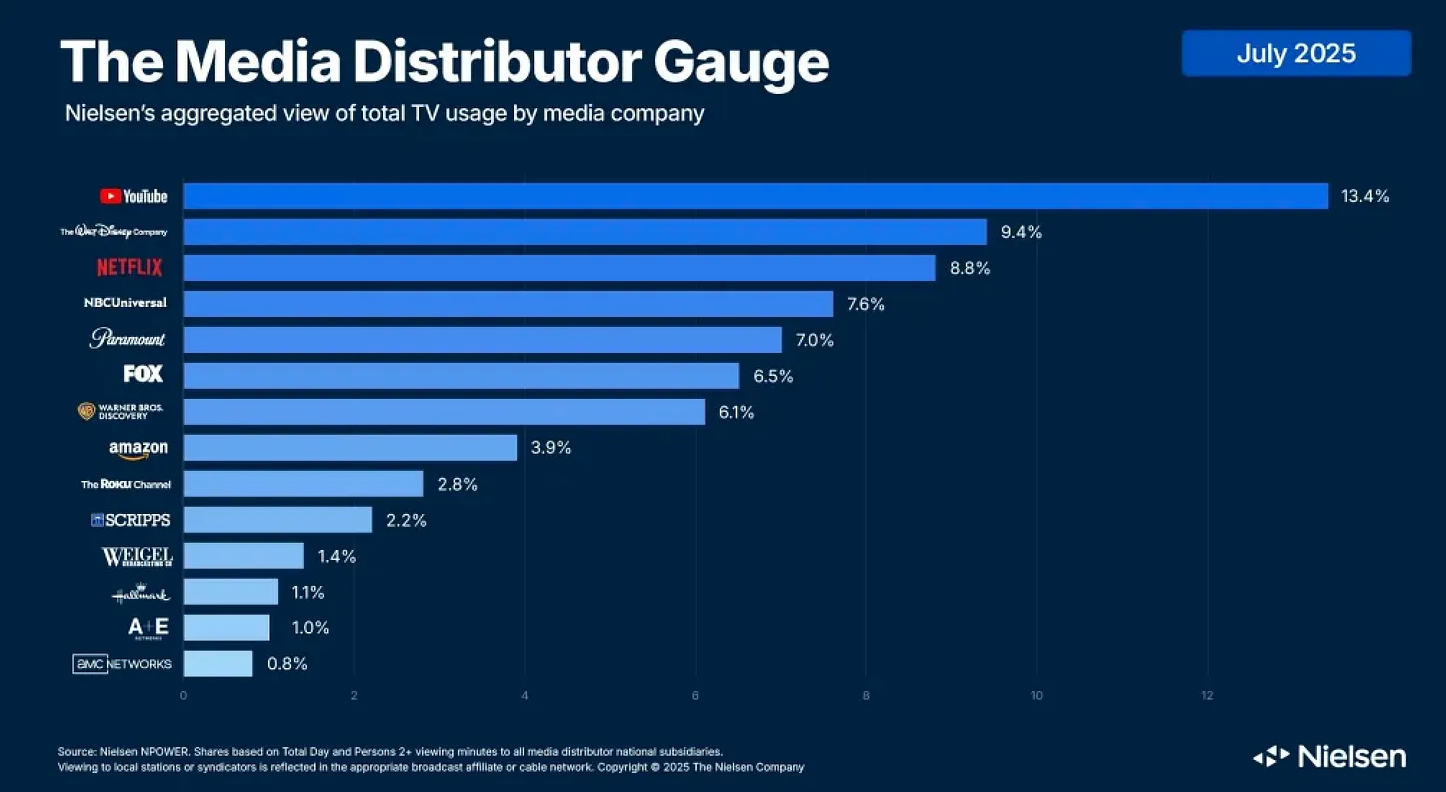YouTube is the new TV + Studios Move Abroad
Youtube is the new TV + Studios Move Abroad
There has been a lot of news out of tech, streaming and Hollywood lately. Starting with studios continuing to move production abroad, like Marvel to the UK. Also, YouTube has quietly surpassed all streamers and networks as the new TV.
Originally posted on my CMMEdia substack newsletter - join me there as I post regularly.
Also, Pop Passport for my podcast/posts on travel and pop culture
There has been a lot of news out of tech, streaming and Hollywood lately. Starting with studios continuing to move production abroad, like Marvel to the UK. Also, YouTube has quietly surpassed all streamers and networks as the new TV. Let’s review.
I. Fall Previews and Studio Shifts
With all of the Fall movie and series previews dropping, and the Toronto Film Festival right around the corner, I am excited to dig in to the (mostly) top entertainment of the year. It also has me thinking about where many of them shot, given the continued studio shifts, growth of UK production, and before in Canada (Hollywood North). This recent news that Marvel Studios will move the bulk of their projects in Atlanta to the United Kingdom, was not a surprise to me at all. Having previously witnessed the shifts to filming in Canada over the past few decades, the UK has seen a steady stream of American studios moving to London in recent years given tax incentives, major studio infrastructure, top talent, proximity to Europe, and more. While living in London over the pandemic, I saw many friends and colleagues from Netflix get moved from L.A. to London, and big productions like Amazon’s Lord of the Rings series get moved there as well. In fact, the UK is experiencing a surge in production the last few years alone, with recent shoots from Wicked to Barbie to Mission Impossible to Andor, it continues to grow as a major international hub for film and TV. From the scheduled HBO Harry Potter television series shoot and Avengers: Doomsday and Spider-Man: Brand New Day filming, to many recent series productions ( House of Guinness, Peaky Blinder’s movie, The Gentlemen, Mobland, new ‘Pride & Prejudice’ and ‘Sense & Sensibility’ remakes, etc) business is good for UK.
Some reads:
Having grown up in a cinephile household, my love for storytelling has never wavered. Additionally a bit of an Anglophile (grew up in the commonwealth with British programming, English Lit major, etc), I have always assumed that the UK entertainment complex would continue to grow. I still often look up where things were shot, and enjoy the strong history of Canada and UK film and television co-production, facilitated by a formal treaty since 1975. This agreement allows qualifying projects to be treated as domestic productions in both countries, enabling access to public funding, tax credits, and other incentives. Beyond financial benefits, the partnership fosters creative collaboration and storytelling across borders.
This may bode well for me and my media x entertainment projects, especially as someone who intricately understands the subtle cultural differences between the UK, U.S., and Canada - and believe me, they exist from social to business to storytelling. While I can simultaneously sympathize with my many friends who have been steadily pushed out of work in Los Angeles, I say this is the optimal time to pivot your skills, study the industry shifts and future growth opportunities, be open to new locations, keep creating on your own given creators have more platforms x reach than ever, build your personal brand, and shoot your shot.
*This graphic is from the AdWeek article “July 2025 Media Distributor Gauge”
II. YouTube is the new TV
There’s been a steady drumbeat on LinkedIn and beyond about the “death of TV,” but the debate has now shifted to something more precise: is YouTube television? In particular, “media cartographer” Evan Shapīro has been leading this conversation and shared insightful charts on the many industry shifts. Netflix became the first great disruptor — capturing audiences at scale and forcing legacy networks to play catch-up. But the more radical truth, often overlooked by industry leaders, is that YouTube has quietly surpassed them all. Despite differences in measurement systems (Nielsen panels vs. raw views), the platform is no longer a sideshow to television. It is television. As Evan said, “ignore the DATA and the AUDIENCE at your own peril”.
According to the Nielsen Media Distributor Gauge for July, YouTube’s streaming dominance has now extended to its sixth consecutive month. The streamer also widened the gap between itself and its closest competitor, The Walt Disney Company, during the just-concluded month. Even with short-term turbulence (like Disney’s recent subscriber fallout per the Kimmel debacle), the trendline is clear: audiences are spending more time on YouTube than anywhere else. What people fundamentally misunderstand about Youtube is that EVERYTHING is on the platform. All network shows have channels, there are packages for actually tv streaming, movies and sports exclusives, there are clips from everything ever, podcasts and playlists, filmmakers and creator original series, shorts like tiktoks, and so much more.
And yet many industry insiders still fundamentally misunderstand what YouTube has become. It isn’t just a collection of cat videos and creator vlogs. It’s an everything network:
Every major broadcast and cable channel has a YouTube presence.
There are live TV and sports packages.
Movies, exclusive series, and documentary films live alongside podcasts, music videos, and news channels.
Shorts function as YouTube’s native TikTok clone.
It’s integrated directly into smart TV interfaces, sitting next to Netflix and Hulu as a default destination.
In other words: YouTube has replicated — and in many cases, surpassed — the variety of a traditional cable bundle. Only this time, the economics look very different. Creators and producers enjoy greater freedom, lower barriers to entry, and in many cases, higher advertiser payouts.
*Revisit my article on media makers going independent on youtube, substack, and social
Netflix itself reflects this paradox. While its executives have been quick to dismiss YouTube as “not a competitor,” the company simultaneously signs deals with top YouTubers and social creators to expand its reach. The hypocrisy underscores a broader point: our definition of “television” has always been fluid. From the golden age of network sitcoms in the 1950s, to cable’s explosion in the 1980s, to streaming’s dominance today — TV has never been a fixed medium. It has always been whatever the audience says it is.
Today, the audience has spoken. YouTube is the most-watched platform on the biggest screen in the house. It’s not “other.” It’s not “emerging.” It’s not “adjacent.” It’s simply television, in its most expansive form yet.
And if YouTube is the first truly social video platform to own the TV screen, it certainly won’t be the last. Netflix is already chasing sports and live events, trying to seize ground once reserved for the legacy networks. The race is no longer about whether digital video will replace TV - that battle has been won. The race now is to define the future of TV.
This actually reminds me of this timely joke from Amy Poehler co-hosting the Golden Globes in 2014: “A lot of nominated shows tonight are actually on Netflix this year. House of Cards, Orange Is the New Black. Enjoy it while it lasts, Netflix, because you’re not gonna be feeling so smug in a couple of years when Snapchat is up here accepting an award for best drama.”


